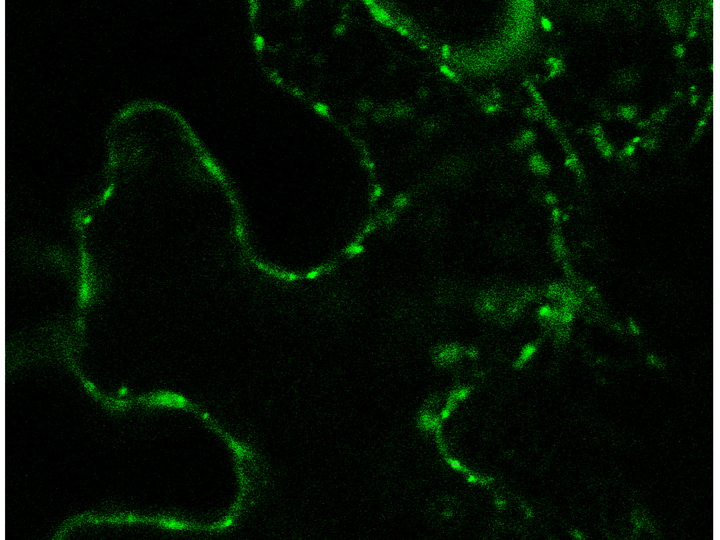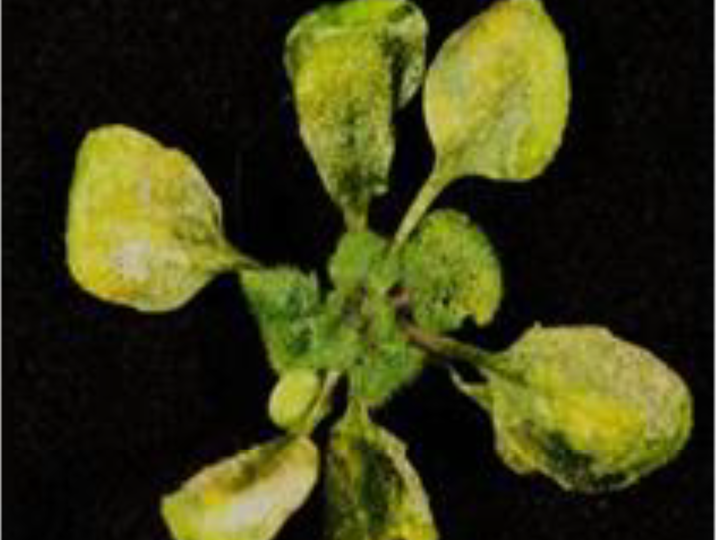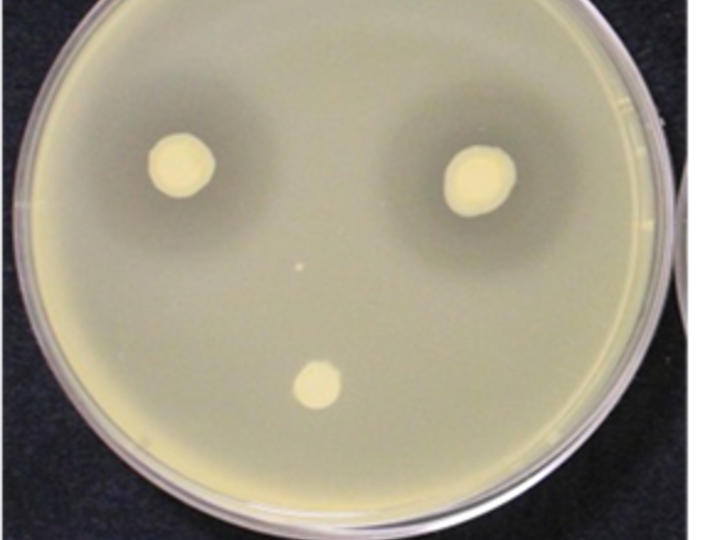Research in the Rojas lab focuses on understanding the interactions between plant and plant pathogenic bacteria. The four main research areas are:
1. Understanding the molecular, cellular and biochemical events that plants use to detect and react to bacterial pathogens.
2. Identifying and characterizing the strategies that bacterial pathogens use to cause disease in plants.
3. Dissecting the interplay between abiotic and biotic stresses on bacterial diseases in crops.
4. Developing sustainable approaches to control bacterial diseases in crops using environmental bacteria.
Investigating Plant Immunity with model plants.
Our lab uses the model plants Arabidopsis thaliana and Nicotiana benthamiana to understand how plants fight bacterial pathogens. The picture shows a laser scanning confocal microscopy image of Nicotiana benthamiana transiently expressing the immune protein AtNHR2B fused to the green fluorescent protein. AtNHR2B-GFP localizes to the cytoplasm and to compartments of the endomembrane system.

Pseudomonas syringae pv tomato DC3000 causes disease in Arabidopsis thaliana
Pseudomonas syringae pv tomato DC3000 uses the type III secretion system as a main virulence strategy. This system delivers bacterial proteins to the cytoplasm of plant cells disrupting normal cellular functions. The picture shows an Arabidopsis plant showing chlorosis after inoculation with P. syringae pv tomato DC3000.

High night temperatures impact on Bacterial Panicle Blight of rice.
Outbreaks of the disease Bacterial Panicle Blight of rice have occurred in years when temperatures have been unusually high specially at night. We are investigating the interplay between high night temperatures and the disease by evaluating transcriptomics changes in resistant and susceptible accessions.

Development of sustainable approaches to control bacterial diseases
We have identified environmental bacterial strains with antagonistic activity against bacterial pathogens such as Burkholderia glumae. We are identifying the molecules responsible for the antagonistic activity.
